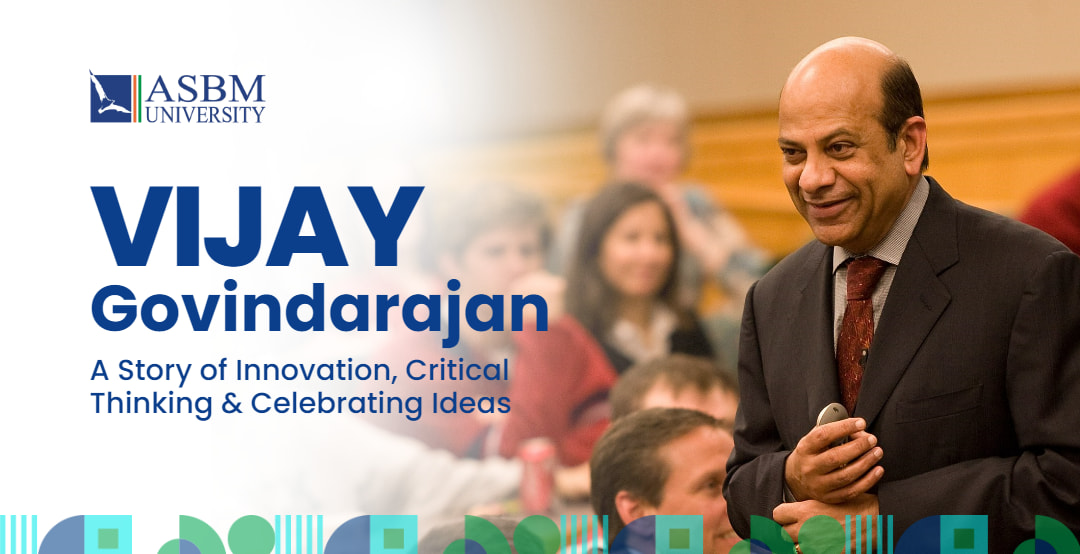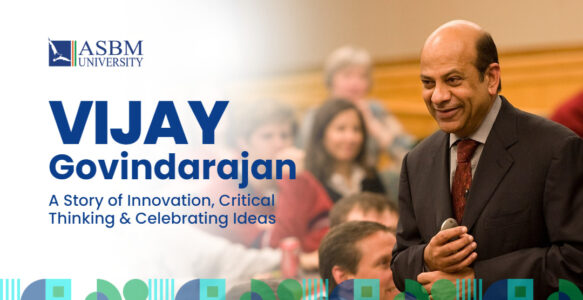Vijay Govindarajan – A Story of Innovation, Critical Thinking & Celebrating Ideas

In the bustling town of Tamil Nadu, where dreams often took root in the fertile soil of education, a young boy named Vijay Govindarajan aka VG began a journey that would ultimately propel him to the heights of management guru-dom. Born with an innate curiosity and an unquenchable thirst for knowledge, Vijay’s story unfolded against the backdrop of India’s academic prowess.
His odyssey commenced at the esteemed Indian Institute of Technology, Madras, where he earned his stripes in Mechanical Engineering. The foundation laid there was a springboard for further intellectual pursuits. The next chapter of his academic saga unfolded at the Indian Institute of Management, Ahmedabad, where he delved into the intricacies of business administration. Little did he know that these early academic endeavors were shaping the future iconic management guru of India.
Harvard Business School beckoned, and Vijay answered the call, embarking on a doctoral journey in business administration. His scholarly pursuits mirrored a passion for strategy, innovation, and global management. The corridors of academia soon echoed with his footsteps as he took up prestigious positions, including the Earl C. Daum 1924 Professor of International Business at the Tuck School of Business, Dartmouth College.
Yet, Vijay Govindarajan’s influence was not confined to the hallowed halls of academia. His pen became a powerful tool for disseminating innovative ideas. The pages he authored were filled with insights that resonated both in scholarly circles and the cutthroat world of business. Co-authoring the book “Reverse Innovation: Create Far From Home, Win Everywhere,” he explored how ideas germinating in developing nations could reshape global industries.
But it was his groundbreaking concept of “Reverse Innovation” that truly set him apart. In a world accustomed to innovation flowing from developed to developing nations, Vijay challenged the status quo. His belief that solutions born in emerging markets could thrive in advanced economies sparked a paradigm shift, urging a more inclusive and global perspective.
The accolades poured in, underscoring his impact on both academia and industry. Awards adorned his achievements, testifying to his prowess as a thought leader. Beyond the ivory towers, Vijay actively engaged with corporations, offering strategic counsel that transcended conventional boundaries. His insights became sought after by leaders across industries, cementing his status as an iconic management guru.
From the small town of Tamil Nadu to the global stage, Vijay Govindarajan’s journey was a testament to his intellect, determination, and modern thinking. His contributions to academia, coupled with real-world influence, positioned him as a revered figure in management. As India’s iconic management guru, he not only shaped the perceptions of leadership but also left an indelible mark on how we perceive and practice management and innovation on a global scale. The legacy of Vijay Govindarajan continues to inspire the next generation of leaders, echoing through the corridors of academia and boardrooms alike.
At ASBM University, we proudly carry forward this legacy, shaping the leaders of tomorrow.



